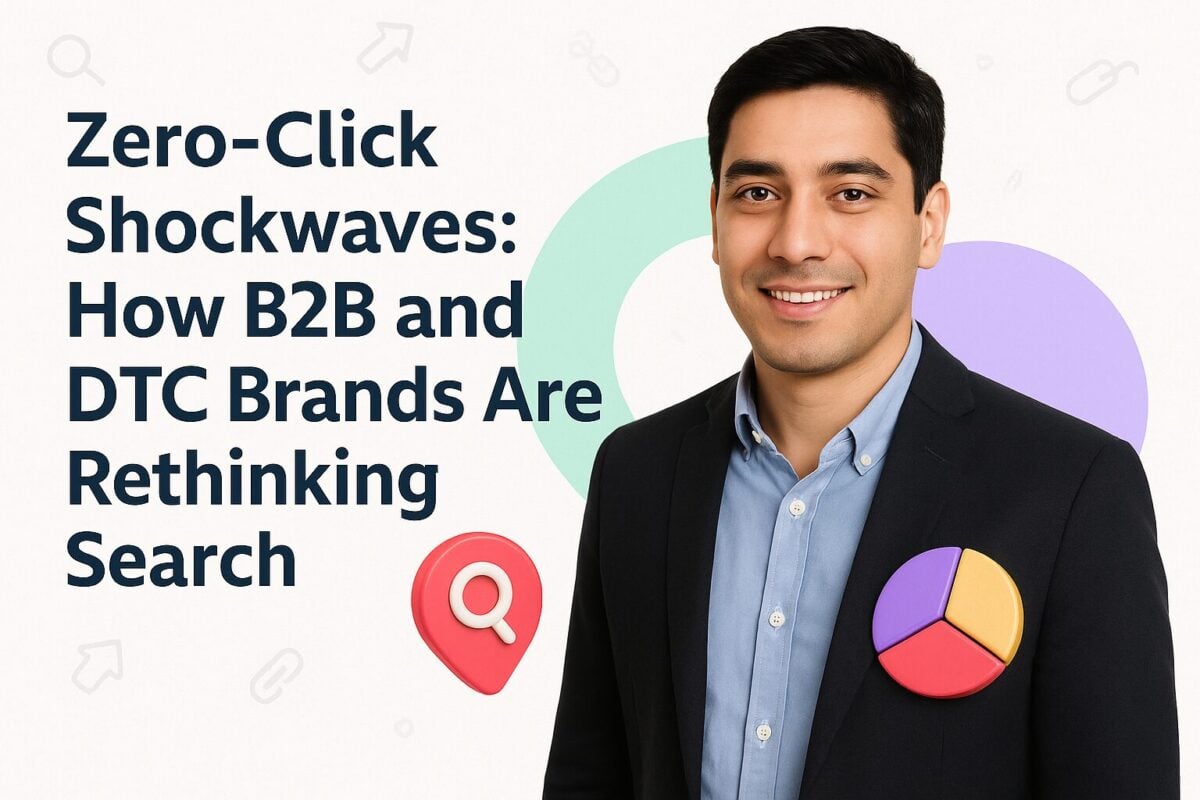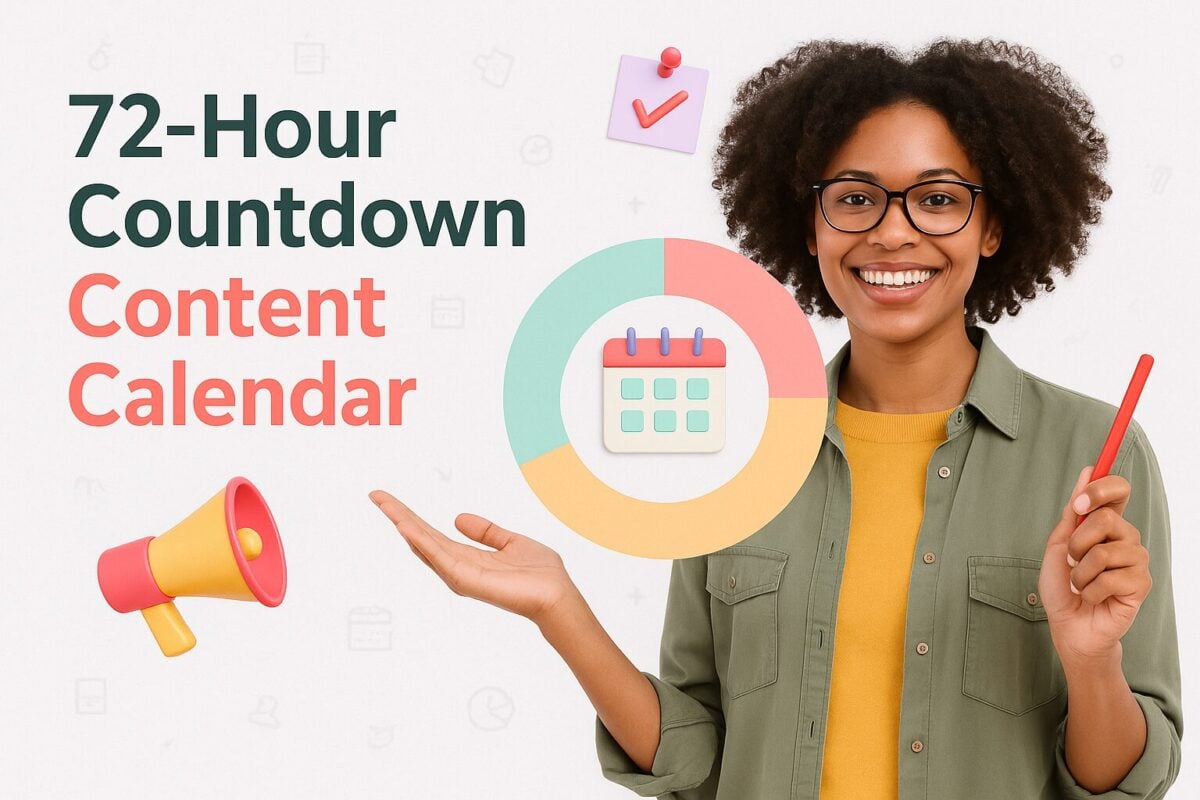Search engine optimization is arguably one of the most demanding marketing strategies. Results don’t happen overnight (if you’re a digital agency, this can be hard to explain to potential clients). A single post will do little for your business goals.
You also need to plan around changing search engine algorithms. The impact that artificial intelligence will have on search algorithms has left marketers scrambling.
We’ve reached out to marketers and SEO professionals working at a few digital agencies working with small businesses, SaaS startups, and marketing tools to hear their thoughts.
One thing is clear — now, more than ever, quality will matter.
9 SEO Best Practices to Adopt in 2024:

1. Let Search Intent Steer Your Content’s Direction
Some consumers are ready to buy and simply need Google to show them a nearby business. Others are far from completing a purchase and are searching the web for more product information.
Search engines’ objective is to display relevant websites based on the specific search query. This means that if you want to rank for specific keywords, you need to identify the search intent (also referred to as user intent) linked to that phrase and structure your content accordingly.
Małgorzata Kwiecień, Head of SEO at Delante, rated as one of the leading eCommerce SEO agencies, recommends that going forward companies zoom in on user intent.
"You can work closer with your user intent, discover new challenges they face, and address them with content within your website. Don't forget to weave in your unique selling points too to add extra branding value."
For example, when a user wants to learn more about a topic, Google will typically display a blog post. On the other hand, if the intent is to buy, you’ll need to use transactional and commercial keywords to attract this group. In this case, detailed product and services pages with high-quality, optimized photos and comparison guides, for example, are needed.
For best results, you’ll need to use a combination of keyword categories. It’s best to invest in a solid SEO tool like Semrush that has several features to help with keyword research.
In addition to a tool like this, you can also create a keyword ranking model. Inna Shevchenko, founder of Upleadium that offers growth and marketing consulting for SaaS startups, uses such a model for blog writing to help her team prioritize keywords and topics.
This model is based on several factors like keyword difficulty, volume, topic relevance, and the likelihood of converting to sign-up based on search intent. She explains,
"In this model, the greatest weight is given to the likelihood of conversion, as we understand that higher traffic does not necessarily lead to more paying customers."
2. Add Proof of Authority
The person who wrote the words is starting to matter much more. Over the past few years, you would’ve noticed that blogs started to include the author’s name, along with a short bio.
Another powerful way to add proof of authority is to collaborate with thought leaders, another one of Inna’s top SEO best practices.
"As the Google algorithm evolves, adding proof of authority and expertise to your SEO content is crucial. One excellent way is to gather expert opinions by using platforms such as HARO, Qwoted, and Featured (previously called Terkel) to publish your questions. Typically, I receive a substantial number of relevant responses that I can include in the article."
It beats cold outreach via a platform like LinkedIn.
3. Integrate FAQ Sections Into Web Pages
Scroll down to the end of this article (or most of the articles published on Influencer Marketing Hub) and you’ll notice a Frequently Asked Questions section.
Toccara Karizma, CEO at Karizma Marketing, a digital marketing agency based in Hawaii that helps eCommerce brands, also recommends this extra step.
"This approach, based on thorough keyword research, effectively targets Google's 'People Also Ask' feature, consistently elevating our clients to the top of search results for high-volume keywords."
When writing FAQ sections, you’ll use H2 tags for about five common questions and limit the answers to between 40 and 50 words.
4. Prioritize Quality Content
This is a big one. You would’ve noticed the golden thread that ties many of the above-mentioned best practices together is that quality content is foundational to any SEO strategy.
This will become even more important as digital marketing agencies start to explore the potential of AI.
Delante’s Małgorzata encourages SEO professionals to embrace the new factor — experience.
"Show the new ‘E’ in E-E-A-T! Google is already flooded with content, so the key to staying attractive to its algorithms is to deliver your unique fresh take."
Whitney Blankenship, Content Manager at Drip, one of the top marketing automation platforms, adds,
"AI is making it really tempting to mass publish a lot of mediocre content. While Google is temporarily rewarding that strategy now, the hammer is eventually going to fall."
She suggests that marketing teams focus on the content that their clients actually want and need and use AI only to speed up the process.
"If you create content that centers on the E-E-A-T principle and follow best practices, you'll climb in your rankings. By all means, use AI to make the process faster. But if you're carbon copying formats into AI and not editing the text at all afterwards, you're going to be in for a bad time later."
Kelly Lourinho, SEO Content Editor at Thrive Internet Marketing Agency — one of the best digital marketing agencies in the US, echoes this:
"Editing and refining your content is arguably one of the most important parts of content creation. While there are many online tools available to help you elevate the standard of your writing, there’s nothing quite like adding a human touch for the more nuanced aspects that govern the world of content."
5. Include Optimized Images
SEO is synonymous with website copy. The advice shared till now focused mainly on the written component, clear evidence that when asked about SEO content is what jumps to mind first.
However, images too can contribute significantly to your efforts. The popularity of Instagram and TikTok is proof that target audiences view visual content as equally informative and engaging.
While images are easy to digest, large image files will slow down your page’s loading time. Google looks unkindly on pages that load slowly and rightfully slow.
The solution — compressing your images.
Then, while you’re at it, take the time to add alternative text (aka alt text, alt tags, or alt descriptions). Basically, it’s a short description of the particular image. It helps search engines to understand what your content is about, helping them with their crawling and ranking efforts.
If an image is unable to load, this text will also be displayed instead of the image. And, if a website visitor with a visual impairment lands on your website, screen readers will use this alt text to make your content accessible.
6. Focus on Link Building
You should have a plan for creating internal links as well as external links. Internal links help with navigation, while external links (aka backlinks) serve as a type of recommendation. Our SEO Industry Trend Report talks more about the evolving role of backlinks in modern AI-driven SEO. Essentially, it's no longer feasible to target backlink acquisition in the traditional way.
By consistently publishing high-quality content, you’ll have an easier time to secure backlinks. Another reason to create quality content consistently. Google uses how your original writing is cited by others as one of its signals for determining topic authority, helping your site to be viewed as more trustworthy.
The goal is to acquire authoritative backlinks, though. You want the right websites to link back to your own. If the backlink appears in low-quality content or a website that’s associated with spam, Google can ignore these links. In some cases, it might even result in a Google penalty. So, when auditing your backlinks check the website’s authority score (a metric that evaluates the overall quality of the site).
7. Chase Awards
Don’t make a mistake, offering valuable content that incorporates relevant keywords and optimized images, along with high-quality backlinks will aid your SEO performance. However, you’ll need more than that.
Ann Smarty, co-founder of Smarty Marketing, one of the SEO agencies based in NYC and a leading voice in this field, urges her clients to “go out there and be loud”. You need to be included in listicles. Even better, if you make a nomination shortlist.
She explains in her weekly newsletter, Smarty’s Digest, that the one time that she agreed to participate in blogger awards, she made it into Google’s Knowledge Graph, a database of billions of facts enabling it to answer questions like “Who are viewed as SEO experts?”
8. Design for Mobile Devices
Mobile responsiveness isn’t something new. Yet, there are still business websites that aren’t designed with mobile devices in mind.
Websites that embrace responsive web design will automatically adjust elements like font sizes to fit a specific screen size.
Towards the end of 2023, Google (finally) completed its shift to mobile-first indexing. Basically, what this means is that the search engine’s crawler uses a website’s mobile version instead of the desktop one.
The implication is that if a business website can’t deliver a seamless user experience to mobile users, you can expect its ranking to suffer.
9. Track Your Results
Just like it’s imperative that you track the results of other digital marketing efforts, so too should you measure the performance of your SEO efforts. In fact, our Digital Marketing Benchmark Report 2024 found that SEO is viewed as the most effective strategy in fulfilling overall marketing goals. It’s also ranked highest for its cost-effectiveness.
That said, it’s up to digital marketing agencies to show to their clients this potential. Hofit Mallachy, SEO Team Leader at Moburst, one of the top UK-based digital marketing agencies, shares this tip,
"When brands are not doing SEO it's because they don't know how to measure the SEO success with money. The best way to show them their potential is by comparing the free organic traffic a good article can bring with time, with the amount of money this can save for the same keyword(s) used in ads. And when we're talking about many SEO oriented pages, this can sum up to thousands of dollars per month."
Key Takeaways
If you take only one thing away it’s that high-quality is crucial. It's the foundation to any SEO campaign. And, high-quality content includes optimized images. It also includes internal links.
High-quality content is written for search intent (not for the sake of keywords) and answers common questions. If you keep this in mind, you won’t have an issue with keyword stuffing.
It also makes it easier to establish your site as an authoritative source, which will become more and more important. Going forward, don’t shy away from sharing your first-hand experience. Just like social media is all about authenticity, so too will website content need to become.
Frequently Asked Questions
Who are the top SEO experts in the world?
According to sources across the web, the following experts are rated as leading voices about all things SEO:
- Barry Schwartz
- Joost de Valk
- Matt Cutts
- Aleyda Solis
- Stephan Spencer
- Matt Diggity
- Eric Enge
- Vanessa Fox
- Mandeep Chahal
Which marketing agencies are great at SEO?
If you specifically want to concentrate on SEO, you can outsource your SEO campaigns to one of the following digital marketing agencies:
- Disruptive Advertising
- SmartSites
- Nuanced Media
- NinjaPromo
- Straight North
- Delante
- Power Digital Marketing
Which are the best keyword research tools?
For help specifically with keyword research, you can check out:
- Frase
- Semrush
- Google Keyword Planner
- Google Trends
- Ahrefs
- WordStream
- Surfer SEO
How can you improve your organic rankings?
To let your website appear higher in the search engine rankings, you’ll need to craft an effective SEO strategy. This includes keyword strategies that address user search intents. You’ll also need to have a solid content strategy in place so that you can become a credible source in your niche. In addition to content, extend your focus to the overall user experience. Browsing your website should be an enjoyable experience, especially when using a mobile device. So, embrace responsive design.
What’s the difference between on-page SEO and off-page SEO?
With on-page SEO, you’ll optimize key web page elements like your meta descriptions and title tags. It also involves keyword research, checking the quality of the content, and adding internal links to improve navigation. Off-page SEO also involves link building. However, instead of internal links, you’ll focus on backlinks. Both on-page and off-page SEO are essential.


